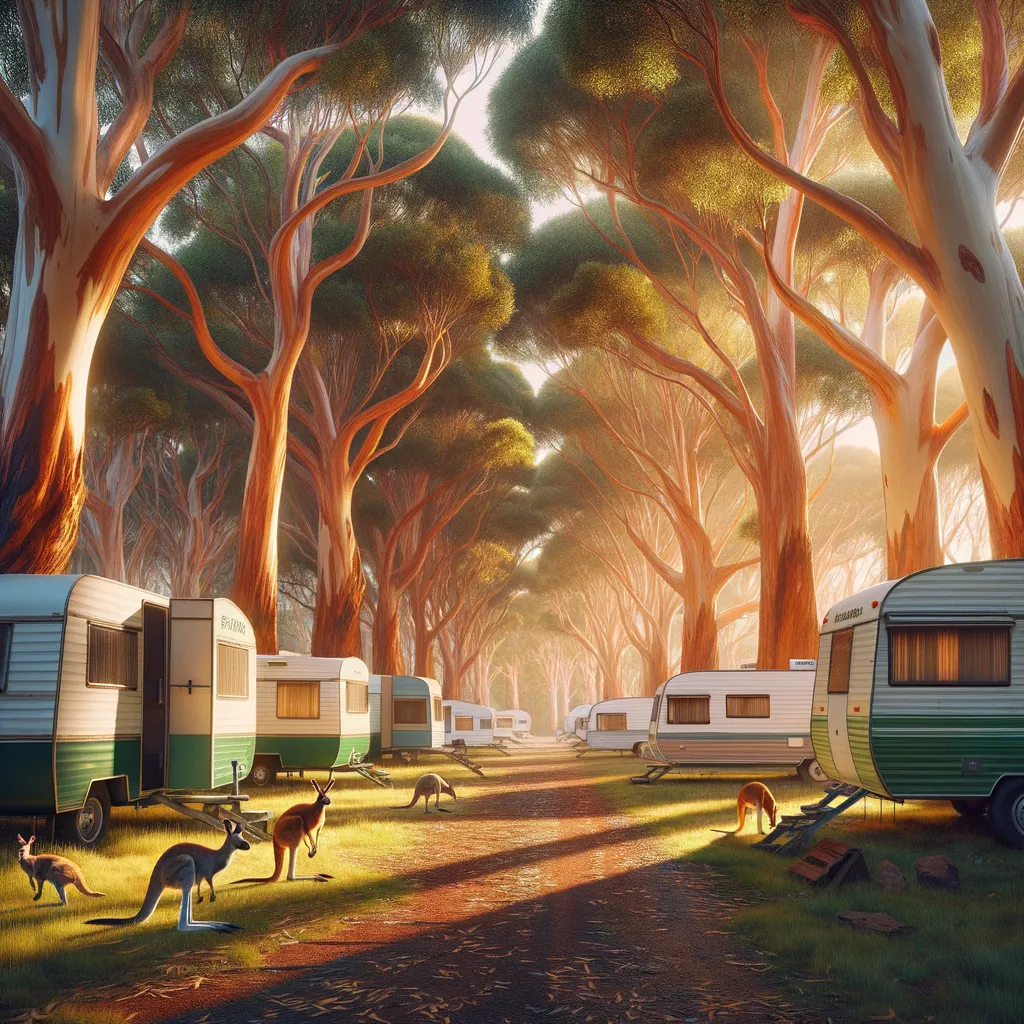Top Strategies for Reducing Campfire Impact: A Parent’s Guide
Welcome, eco-conscious parents! As guardians of both our families and the great outdoors, it’s our responsibility to instill a love for nature in our children while also teaching them how to protect it. In this guide, we delve into best practices for minimizing campfire impact, ensuring our adventures leave only memories, not marks. Ready to embark on a journey of responsible exploration? Let’s ignite our understanding with some bright ideas!
Understanding the Importance of Responsible Campfire Management
Before we spark up our next campfire, it’s crucial to recognize the why behind our efforts. Campfires, for many, are at the heart of camping experiences. They’re sources of warmth, focal points for storytelling, and means of cooking. However, when not managed correctly, they can cause irreversible damage to ecosystems, wildlife habitats, and increase wildfire risks. Educating ourselves and our little campers on minimizing our campfire impacts is a step forward in preserving the great outdoors for future generations.
Choosing the Right Spot for Your Campfire
Selecting an appropriate site is the first step in setting up a low-impact campfire. Here are a few tips to get you started:
- Use Designated Fire Rings or Pits: Opt for established fire rings or pits if available. These areas have been specifically designed to contain fires safely and minimize environmental disturbance.
- Avoid Sensitive Areas: Steer clear of locations where fires can damage sensitive ecosystems, such as near streams, rivers, or dense forest undergrowth. Always adhere to local regulations and posted signs regarding fire restrictions.
- Consider Wind Direction: Set up your campfire in an area where the wind won’t carry sparks into dry grass or wooded areas. Keeping a safe distance from your tent and surrounding trees is also paramount.
Preparing Your Campfire Responsibly
With the right spot picked out, the next step is preparation. A responsible campfire setup involves several key considerations:
- Keep Fires Small: A small, manageable fire not only reduces wood consumption but also limits the potential for accidental spread. Plus, it’s easier to extinguish.
- Gather Wood Responsibly: Use only fallen timber or branches. Avoid breaking living branches, and never cut down trees. If possible, bring eco-friendly, certified firewood from home to prevent the spread of invasive species.
- Clear the Area: Remove any flammable materials from around the fire pit, creating a safe, clear zone to prevent the fire from spreading.
Lighting Your Campfire
Illuminating the night sky with a campfire is magical, but how we start it matters. Here’s how to light your fire the eco-friendly way:
- Use Natural Fire Starters: Instead of chemical starters, opt for natural alternatives like dry leaves, pine cones, or small sticks. For a more efficient, eco-conscious choice, consider bringing your own fire starters made from recycled materials.
- Practice Safe Lighting Techniques: Keep your face and body away from the fire as you light it. Use matches or a long-stemmed lighter for safety, and ensure children are supervised and educated on fire safety.
Engaging our children in these processes not only teaches them about environmental responsibility but also imparts crucial survival skills. Demonstrating the importance of preserving nature’s beauty while enjoying its warmth and wonder is a powerful lesson.
Educating the Next Generation
Our role as eco-conscious parents doesn’t end with just practicing these steps; it extends to actively educating our children about the significance of each action. Discuss the reasons behind choosing specific fire locations, the importance of minimizing wood consumption, and the necessity of fully extinguishing fires. These conversations enrich the camping experience with deeper meaning and purpose.
Top Strategies for Reducing Campfire Impact: A Parent’s Guide
Welcome, eco-conscious parents! As guardians of both our families and the great outdoors, it’s our responsibility to instill a love for nature in our children while also teaching them how to protect it. In this guide, we delve into best practices for minimizing campfire impact, ensuring our adventures leave only memories, not marks. Ready to embark on a journey of responsible exploration? Let’s ignite our understanding with some bright ideas!
Understanding the Importance of Responsible Campfire Management
Before we spark up our next campfire, it’s crucial to recognize the why behind our efforts. Campfires, for many, are at the heart of camping experiences. They’re sources of warmth, focal points for storytelling, and means of cooking. However, when not managed correctly, they can cause irreversible damage to ecosystems, wildlife habitats, and increase wildfire risks. Educating ourselves and our little campers on minimizing our campfire impacts is a step forward in preserving the great outdoors for future generations.
Choosing the Right Spot for Your Campfire
Selecting an appropriate site is the first step in setting up a low-impact campfire. Here are a few tips to get you started:
- Use Designated Fire Rings or Pits: Opt for established fire rings or pits if available. These areas have been specifically designed to contain fires safely and minimize environmental disturbance.
- Avoid Sensitive Areas: Steer clear of locations where fires can damage sensitive ecosystems, such as near streams, rivers, or dense forest undergrowth. Always adhere to local regulations and posted signs regarding fire restrictions.
- Consider Wind Direction: Set up your campfire in an area where the wind won’t carry sparks into dry grass or wooded areas. Keeping a safe distance from your tent and surrounding trees is also paramount.
Preparing Your Campfire Responsibly
With the right spot picked out, the next step is preparation. A responsible campfire setup involves several key considerations:
- Keep Fires Small: A small, manageable fire not only reduces wood consumption but also limits the potential for accidental spread. Plus, it’s easier to extinguish.
- Gather Wood Responsibly: Use only fallen timber or branches. Avoid breaking living branches, and never cut down trees. If possible, bring eco-friendly, certified firewood from home to prevent the spread of invasive species.
- Clear the Area: Remove any flammable materials from around the fire pit, creating a safe, clear zone to prevent the fire from spreading.
Lighting Your Campfire
Illuminating the night sky with a campfire is magical, but how we start it matters. Here’s how to light your fire the eco-friendly way:
- Use Natural Fire Starters: Instead of chemical starters, opt for natural alternatives like dry leaves, pine cones, or small sticks. For a more efficient, eco-conscious choice, consider bringing your own fire starters made from recycled materials.
- Practice Safe Lighting Techniques: Keep your face and body away from the fire as you light it. Use matches or a long-stemmed lighter for safety, and ensure children are supervised and educated on fire safety.
Engaging our children in these processes not only teaches them about environmental responsibility but also imparts crucial survival skills. Demonstrating the importance of preserving nature’s beauty while enjoying its warmth and wonder is a powerful lesson.
Educating the Next Generation
Our role as eco-conscious parents doesn’t end with just practicing these steps; it extends to actively educating our children about the significance of each action. Discuss the reasons behind choosing specific fire locations, the importance of minimizing wood consumption, and the necessity of fully extinguishing fires. These conversations enrich the camping experience with deeper meaning and purpose, firmly planting the seeds for a lifelong commitment to environmental stewardship.
By adopting and teaching these best practices for minimizing campfire impact, we can ensure that our outdoor adventures do not harm the natural world. It empowers us and our children to be a part of the solution, safeguarding our beloved wilderness areas for generations to come. Responsible campfire management is more than a set of actions; it’s a mindset that embraces the importance of preserving the beauty and integrity of the outdoors. By instilling these values in our children, we raise a generation of mindful, eco-conscious explorers ready to protect and preserve the natural world.
In summary, minimizing campfire impact starts with thoughtful preparation, choosing the right location, and guiding the next generation. It’s a collective
Outdoors. Great read on camping
Disclaimer
The articles available via our website provide general information only and we strongly urge readers to exercise caution and conduct their own thorough research and fact-checking. The information presented should not be taken as absolute truth, and, to the maximum extent permitted by law, we will not be held liable for any inaccuracies or errors in the content. It is essential for individuals to independently verify and validate the information before making any decisions or taking any actions based on the articles.




